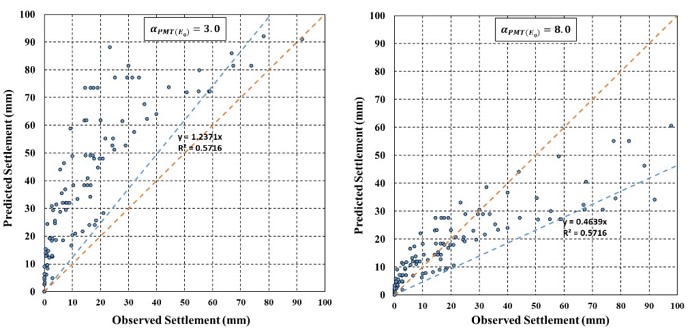Settlement of shallow foundations on sand – a database study

Abstract
Generally, the first choice in the selection of a foundation for buildings and other structures is a shallow foundation because it is typically more economical and easier to construct than a deep foundation. However, shallow foundations are usually considered to settle more than deep foundations. This is a fallacy, as well-designed shallow foundations do not settle more than well-designed deep foundations. To calculate the settlement of shallow foundations on sand, the most critical parameter is the soil modulus. This parameter is influenced by a number of factors, the range of values is large, and the selection is difficult. Comparison between observed settlement and measured settlement can help to calibrate the soil modulus, which best matches the settlement measurements. In this article, a probability analysis based on a database of 315 shallow foundation settlement records on sand is presented. The data is organized in a large spreadsheet called TAMU-SHAL-SAND. The foundation widths in the database vary from 0.30 m to 135 m with a mean of 7.76 m and a coefficient of variation of 1.21. The SPT N values are between 2 blows per foot (bpf) and 60 bpf with an average of 23.7 bpf and a coefficient of variation of 0.56. The CPT qc values range from 0.32 MPa to 19.2 MPa with a mean of 7.92 MPa and a coefficient of variation of 0.60. The PMT E0 value ranges from 2.4 MPa to 16.6 MPa with an average of 10.5 MPa and a coefficient of variation of 0.40. Using the database, scatter plots of predicted vs. measured settlement are presented. In addition, a probability plot is presented, with the probability that the predicted settlement will be less than the measured settlement on the vertical axis and a prediction multiplier on the horizontal axis. The results can help the practitioner decide at which level of probability to operate. The data show that using E (kPa) = 1000 N (bpf), E = 4 qc or E = 3 E0 in the elastic equation gives a settlement which has a 90% probability of being larger than the measured settlement; N is the uncorrected SPT blowcount, qc is the CPT point resistance, and E0 is the first load pressuremeter modulus.
Keywords
Citation
Bahmani Shoorijeh, M., Briaud, J. (2020). Settlement of shallow foundations on sand – a database study, Vol. 6, Issue 2, p.1-17. doi: 10.4417/IJGCH-06-02-01
DOI: http://dx.doi.org/10.4417/IJGCH-06-02-01
Copyright © 2004-2018 Elxis s.a. All rights reserved. Powered by Argo-E LLC.




